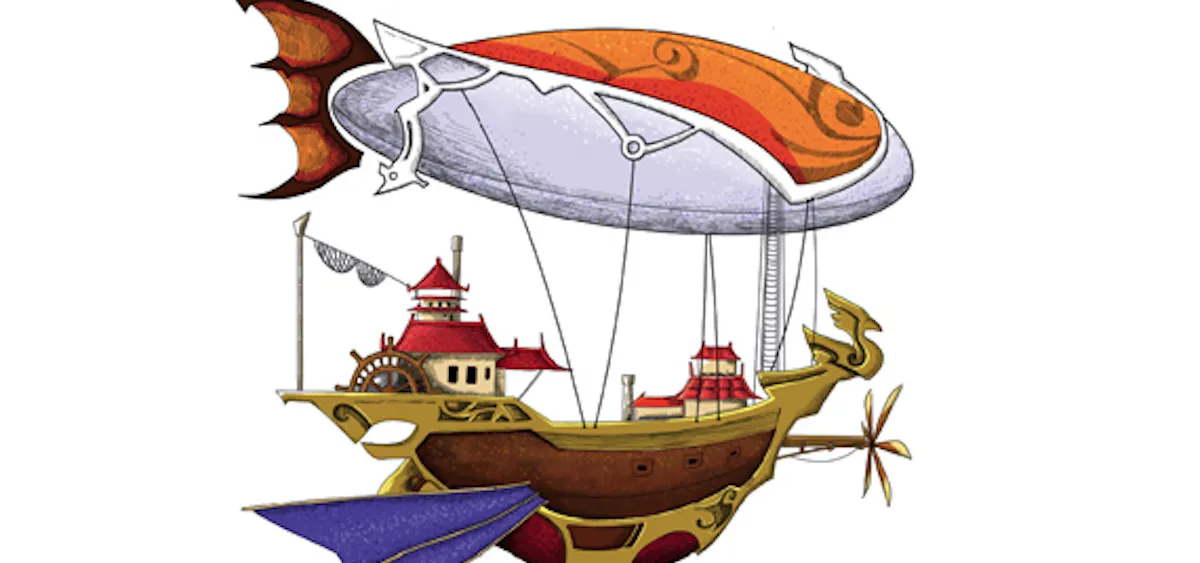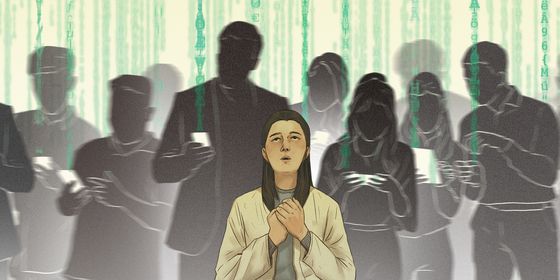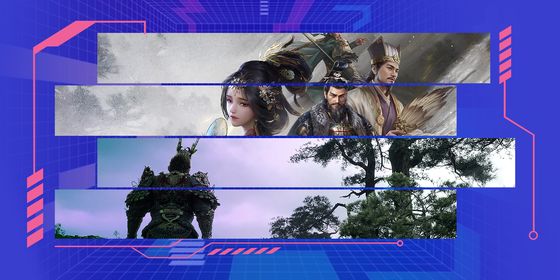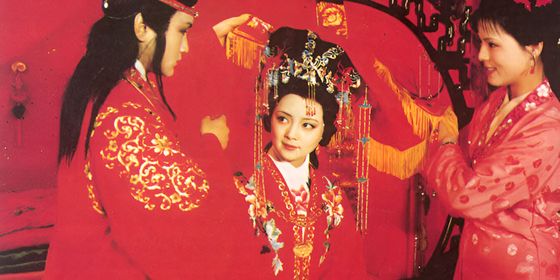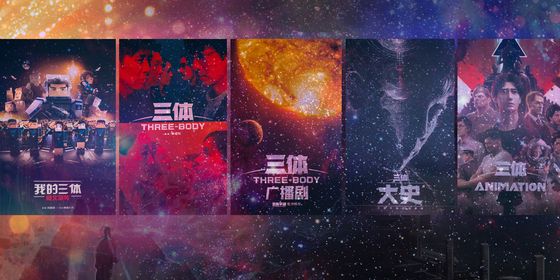Chinese science fiction served an important purpose in China’s recent turbulent past
The People’s Republic of China has long worshipped science. But science-fiction has had a harder time of it. Fantasies of interplanetary travel go back millennia in China, but it was the experience of colonialism, combined with the opening up to the outside world that drove Chinese sci-fi authors. The technological superiority of the West posed serious challenges to the confidence of Chinese, some of which could best be answered in fictional form.
Early 20th Century Chinese science fiction fell into two categories. The first is the clearly satirical, like Lao She’s (老舍) great Cat Country (《猫城记》), whose science-fiction elements consist largely of the frame story of a voyage to Mars, where the travelers discover an ancient civilization of cat people with suspicious similarities to China, or Xu Nianci’s (徐念慈) Tales of Mr Braggadacio (《新法螺先生谭》). These are more akin to Gulliver’s Travels than modern science-fiction.
The second are nationalist fantasies in which China re-emerges as a great power in the near-future, defeating foreign invaders through some technological magic such as the laser weaponry or super-planes. These works ironically mirrored the “Yellow Peril” fantasies often popular in the West, where a future China rose to prominence and threatened the White Man’s rule.
The foundation of the People’s Republic seemed to open up new possibilities for writers, though these mainly proved an illusion. Science occupied a special place in communist ideology. Marxism itself promised a history of science, its discovery as inevitable a part of the course of human progress as electricity or penicillin. The initial wave of PRC science-fiction hit in the 1950s, at a time when science seemed to promise dreams of a glittering future and many Chinese scientists were returning home to bring their skills to the motherland.
The Soviet Union, then still China’s “elder brother”, had already pioneered a particular stripe of juvenile sci-fi featuring young pioneers among the stars, bringing the socialist ideal to distant worlds through technological ingenuity. Ironically, the form was largely copied from the US, though aliens rarely featured, and when they did they were often paragons of socialism, since any advanced species would, naturally, have developed Communism.
Actual political content was fairly scanty, with the focus instead on adventure and the solving of problems through the clever application of knowledge. The didacticism was scientific, not political. The most famous of the Chinese stories was Zheng Wenguang’s (郑文光) “From the Earth to Mars” (《从地球到火星》), the title a piece of playful one-upmanship on Jules Verne’s From the Earth to the Moon. The tale is a typical example of juvenile adventure as “Spaceship #1” made its way to the Red Planet. Swap the red flag for the Stars and Stripes, and the story could happily have run in a boys’ magazine of the 1930s in the US.
Zheng, like many science-fiction writers, was a scientist himself—an astronomer at the Beijing Observatory. He was bitterly well-placed to observe the limits on science in a country that was ready to put ideology above reality, whether in copying the fantasies of Soviet pseudo-scientist Lysenko in genetics or in rebelling against the very notion of expert knowledge itself. As with so much else, the Cultural Revolution meant a total end to science fiction in China. There was no room for “fantasy” in the world of “socialist realism”. Zhang spent the decade in a labor camp.
The first tentative hints of change came in 1976, when the Cultural Revolution was on its last legs. Ye Yonglie (叶永烈), a then 36-year-old writer, published the first science fiction story for a decade and a half, “Strange Cakes” (《石油蛋白》). The venue was Science for Juveniles (《少年科学》), still published today, one of the many popular magazines that survived the political vicissitudes of the last decade by being focused on technological matters. Scientific magazines would give many sci-fi authors their first home, until a whole raft of specifically sci-fi magazines sprung up at the end of the 1970s.
From 1978 to 1983, China saw another brief “golden age” of science fiction, with millions of readers flocking to the newsstands every month to enjoy their favorite authors. By Western standards, much of this seems clumsy and didactic—but then, so does most early Western science-fiction.
Ye was easily the most dominant writer of the period, and the only one really still remembered by the Chinese public today. His works tended to be hopeful; the most popular, selling over three million copies, was a series called “Little Know-It-All Explores The Future” (《小灵通漫游未来》).
In these a Tintin-esque journalist, Xiao Lingtong (“Little Know-It-All”) wanders about a China that has put poverty behind it, instead leaping into a new era of robots, artificial suns, and other technological wonders. There’s not a great deal in the way of plot; they’re more playful, aspirational inquiries into what could be. For Chinese readers for whom an electric kettle was still a luxury, they represented a world almost unbelievable.
There was plenty of nationalism on display in these works too, though they tend to exult less in bloodshed than their predecessors at the start of the century. Instead the focus was often on peaceful scientific inventions turned to deadly ends. Thoughtful Chinese, like everyone else, were very much aware that the nuclear clock was close to midnight in the early 1980s, and the shadow of the bomb looms large in these tales of super-weapons and mass death.
Forty-three-year-old anthropologist Tong Enzheng (童恩正) won a national award for Best Short Story in 1978 with his “Death Ray on a Coral Island” (《珊瑚岛上的死光》). In it, a Chinese scientist finds that his invention, a super-battery, can be turned to deadly ends by a foreign superpower, the “ASC”—implied to be a fusion of the Soviet Union and the US—to fuel the eponymous death ray. The story was made into China’s first science fiction film in 1980, now enjoyable largely as an exercise in accidental camp, especially the Chinese actors dressed in white-face to play the foreign villains.
Faintly menacing foreigners are a mainstay of the stories, especially those specifically aimed at kids, usually rival space expeditions or competing scientists, as in Wang Xiaoda’s “Mysterious Wave”. Later critics tend to identify the antagonists as “American”—the actual nationality is rarely if ever stated—but in many cases the writers would have meant them to be read as Russians. The rivalry with the Soviet Union was far more acute, and the potential for real conflict far more alive in people’s imaginations in the early 1980s than the disputes with the US. When Chinese contemplated the prospect of nuclear annihilation, it was Soviet bombs they imagined falling on their cities.
It was Zhang, fresh out of the labor camp, who wrote some of the most interesting works from the time, mixing science-fiction with the “scar literature” that told of Cultural Revolution sufferings. In “Mirror Image of Earth”, aliens preserve Cultural Revolution films as indicators of humanity’s depravity.
While their earlier counterparts had had only Soviet models to work from, the new generation had access to Western literature, fictional and otherwise. One of Ye’s novels pays homage to journalist David Rorvik’s 1978 book In His Image: The Cloning of a Man, where Rorvik claimed to have been involved in the successful cloning of a human being. Ye’s popular series of near-future detective stories also have more than a trace of Isaac Asimov’s own mixture of the two genres about them.
But the brief golden age was brutally curtailed by the campaign against “spiritual pollution” in 1983, when the authorities cracked down on the poisonous tendrils of Western influence. Science-fiction was a particular concern. Zheng, exhausted from his days in the labor camp, suffered a heart attack in early 1983, but was dragged out to face a “struggle session” for his works anyway.
As well as political concerns, the authorities began checking science-fiction for “scientifically inaccurate” content. Among the victims was Ye’s 1983 Miracle on the World’s Highest Peak (《世界最高峰上的奇迹》), about a group of scientists who hatch a dinosaur egg on the top of Mount Everest through biochemical manipulation—predating Jurassic Park by seven years, though admittedly with a less impressive scientific veneer.
Ye faced more serious political problems for another short story about AIDS being eradicated by heroic Chinese scientists from Xinjiang. His error: implying that China had AIDS, or, indeed, could ever have AIDS. “There have been no cases of AIDS in China,” the Ministry of Health wrote, “thus proving that socialism is superior. If this story is published, it will confuse people and cause chaos.”
Bizarrely, actual pseudo-science thrived in the 1980s, perhaps filling a gulf left by the disappearance of fiction. Alongside the science-fiction boom, a massive market for all manner of “extraordinary powers” supposedly preserved by qigong masters had emerged. Mainstream newspapers wrote, without skepticism, of telepathy, telekinesis, karmic enlightenment, super-children, and miraculous healings. For years, until the field experienced its own crackdown in the late 1990s, Chinese newspapers were full of accounts that read like the wildest fantasy fiction, with qigong masters opening children’s telepathic powers, teleporting, healing the sick, and initiating the elect. Journalists fell for simple magic tricks. Popular science writers, a field in which many of the science fiction authors also worked, had done their best to counter this, but they were now out of favor.
Although some few science-fiction magazines limped on, the field was badly damaged. China’s science-fiction dreams were put on hold—for the moment. Eight years later, a new wave of writers, with a far greater range to work with, would revitalize the field. But the brief spasms of inspiration from before give a vision, like much science-fiction of the past, of what might have been in a better world.





